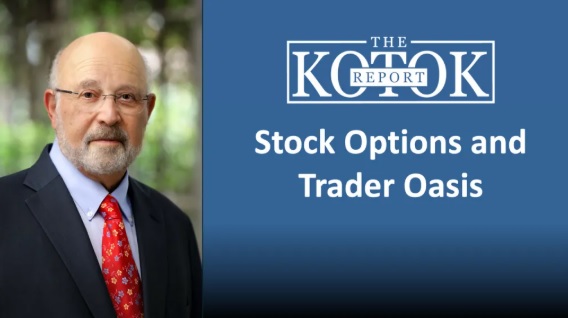
We will start this commentary with the definitions of two stock options trading strategies: the collar and the straddle.
A collar is a stock options trading strategy used to protect against significant losses while also limiting potential gains. According to Investopedia (“The Collar Options Strategy Explained in Simple Terms,” https://www.investopedia.com/terms/c/collar.asp), it involves three components:
- Owning the underlying stock
- Buying an out-of-the-money put option to protect against the stock price falling
- Selling an out-of-the-money call option to generate income, which helps offset the cost of the put option.
This strategy is useful when you are optimistic about the long-term prospects of a stock but concerned about short-term volatility. The collar limits your downside risk but also caps your upside potential.
A straddle is a neutral stock options trading strategy that involves buying both a call option and a put option for the same underlying stock, with the same strike price and expiration date. This strategy profits from significant price movements in either direction. If the price of the underlying asset moves sharply up or down, the gains from one option can offset the losses from the other. There are two types of straddles:
- Long straddle – betting on high volatility, where you expect the price to move significantly but are unsure of the direction
- Short straddle – betting against volatility, where you expect the price to remain stable
- Both strategies have their unique benefits and risks, and choosing the right one depends on your market outlook and risk tolerance.
But how does an options trader know what to buy or sell and at what price to do it? Answer — it takes skill and experience to determine the answers and timely decision-making.
I want to thank Eric Hale and Greg Jensen, cofounders of OptionsANIMAL (www.OptionsAnimal.com) and Trader Oasis (www.TraderOasis.com), for the invitation to keynote their national options trading conference in Tampa. This two-day conference was an excellent tutorial for serious investors who use stock options. I sat through several presentations. Karen Smith on the use of collars was excellent.
Conference themes included how to measure risk and how to structure option trades. Other more technical areas included the use of “delta” (rate of change in price) and “gamma” (the change in the rate of change) and “theta decay” (the loss of an option’s value due to time elapsing between purchase of the option and the terminal maturity date of the option. The options crowd calls them “the Greeks.”
The final takeaway for me was an extremely positive view of the conference sponsors. They know the options space. They teach it. They dive deeply into the math, structure, and risk management.
My focus for the keynote was our new book, The Fed and the Flu: Parsing Pandemic Economic Shocks. The emphasis of the presentation was on the Fed and its response during Covid and the history of the Fed since inception. The book has an extensive section on that subject. During my two days in Tampa, I discussed lessons for investors found in the book. I appreciated the invitation to keynote and the support for The Fed and the Flu.
And, for me, I saw applied options trading strategies by experts. Takeaways include learning about the Greeks. Understanding the Greeks help options traders sharpen their buy, sell, hold decisions. The world is nonlinear, and gamma drives the bus in these volatile markets. Many thanks again to Eric, Greg and their colleagues for the lessons and tutorials.
David R. Kotok, April 20, 2025
(The above was first published on The Kotok Report website and via LISTSERV. For details, and to subscribe to The Kotok Report, visit https://kotokreport.com/.)
